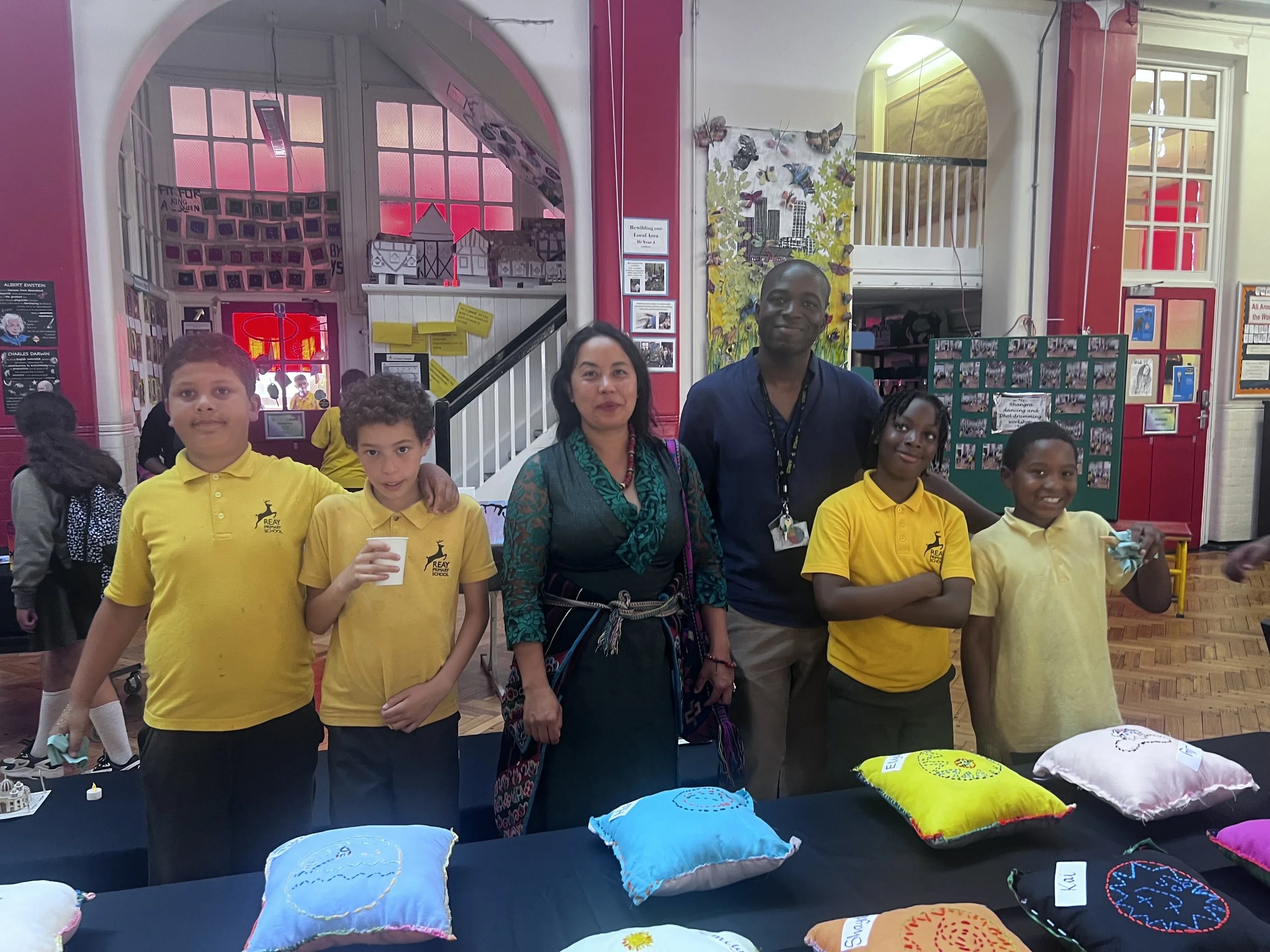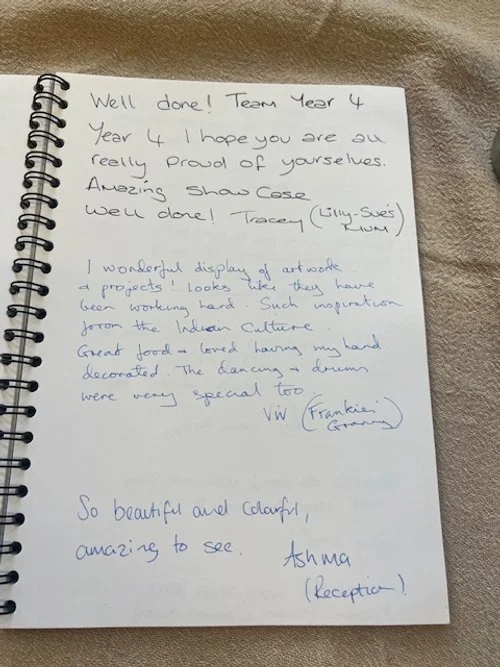Why Teaching South Asian Heritage Through Art Matters More Than Ever
Our Year 4 pupils, guided by resident artist Premila and teacher Steven, proudly showcased their beautifully hand-stitched Kantha cushions in a community-wide art exhibition. The event saw us welcoming parents and the public to celebrate their work this summer.
By Bilkis Miah, Founder of You Be You
Growing up as a British Bangladeshi, I never truly learned about my own history. It wasn’t until I was 21 during a period of independent research that I first discovered the Partition of India. One of the most significant events in both South Asian and British history, yet it had never been mentioned in my classrooms.
This absence in our education system isn’t just a gap; it’s a silence. And that silence has consequences. When young people don’t see their histories reflected in what they’re taught, they start to feel invisible. It shapes how we see ourselves, how we connect to others, and how confident we feel in our identity.
That silence is exactly why You Be You exists.
With the support of the Paul Hamlyn Foundation, we’ve been working across five schools in the UK to bring South Asian heritage and arts into classrooms, not as a cultural “add-on,” but as a fundamental part of building identity, belonging, creativity, and resilience.
Take Frankie, for example, an 8-year-old who had never threaded a needle before joining one of our Kantha stitching workshops. By the end, he’d created a makeup bag, installed a zip (with determination), and proudly sold it to his mum for £12. She now has to make room for a “sewing corner” in their home. As she told us:
“Since he’s done the sewing workshops, he now wants to make loads of things. It’s really sparked his imagination—so thank you.”
Frankie now wants to be a tailor when he grows up.
This is the power of representation. When children see their own cultures reflected through stitches, stories, or symbols they begin to believe their ideas matter. They grow more confident. They lead. They imagine bold futures for themselves.
And when these lessons are led by people who share their heritage, the impact is even deeper. It’s not just about learning new skills. It’s about healing invisibility, fostering understanding, and nurturing a joyful sense of self.
The results speak for themselves.
89% of our pupils said they loved learning about different cultures.
85% felt proud of what they’d created.
All schools showed between 89.9% to 99.9% positive engagement, showcasing exceptional reach across settings.
That’s why this work matters.
Reimagining Education: A Collaborative Invitation to Policymakers
As the national curriculum undergoes review, we see a vital opportunity to better reflect the richness of South Asian heritage across subjects like History and Art.
We urge policymakers to consider how events like the Partition of India and the ongoing contributions of South Asian communities to British life can be woven into the core of our historical education. Not as side notes, but as integral parts of Britain’s story. In Art and Design, global craft traditions like Kantha stitching, Warli painting, or Rangoli should be included as powerful case studies celebrating creative expression, storytelling, and community across cultures.
Beyond curriculum content, we believe more should be done to support creative partnerships between schools and artists from the communities they serve. These artists bring cultural fluency and lived experience that can transform how pupils connect with the material.
We also recommend developing teacher training and CPD modules that focus on culturally inclusive arts education. For complex topics like the Partition, it's essential to take a trauma-informed approach: one that allows space for reflection and is co-developed with communities who have a direct connection to these histories. Teachers need the confidence, sensitivity, and tools to explore these stories with care.
Even small changes, such as funding for cultural celebration weeks, school exhibitions, or artist residencies can have a huge impact. We’ve seen firsthand how they ignite pride, joy, and curiosity in young learners.
These recommendations are thoughtful, realistic steps towards a curriculum that reflects the diversity of Britain today. One that gives every child the chance to feel seen, heard, and empowered.
That’s why we do what we do. And we’re just getting started.


